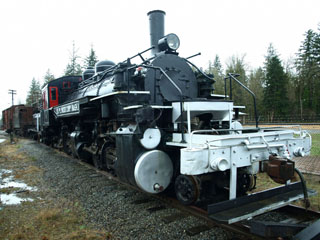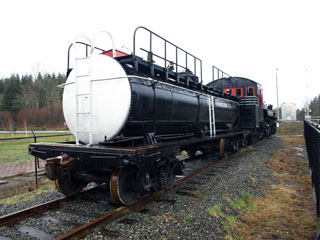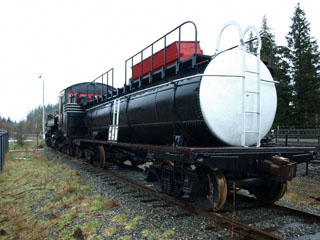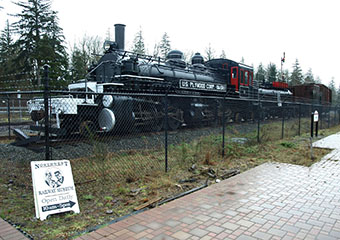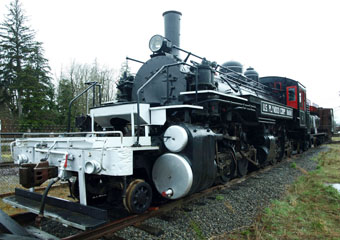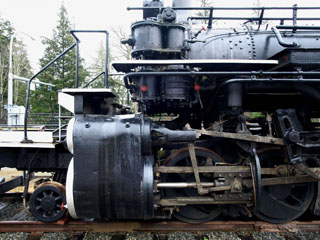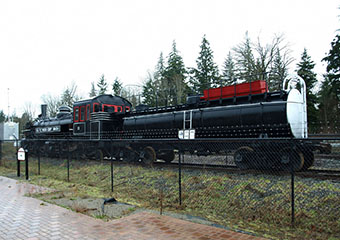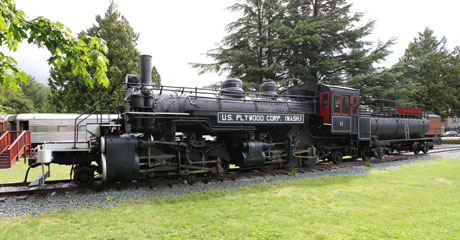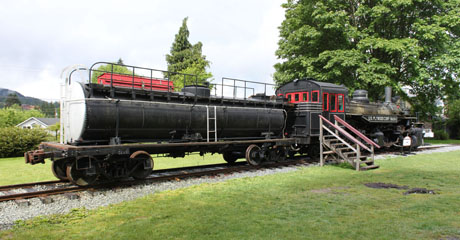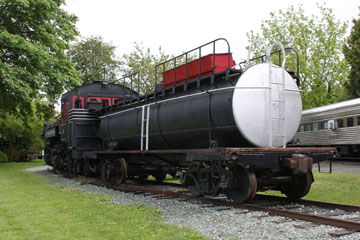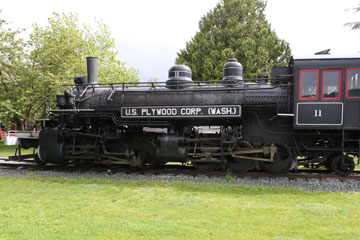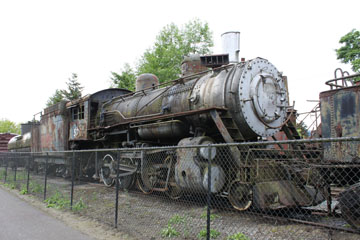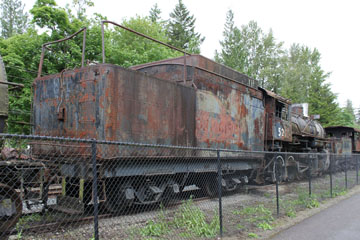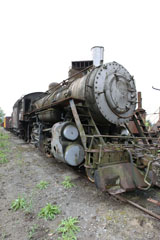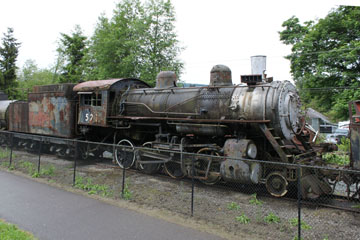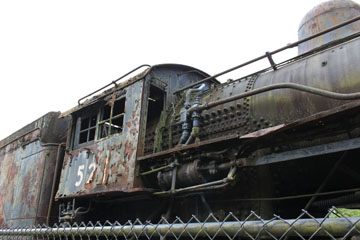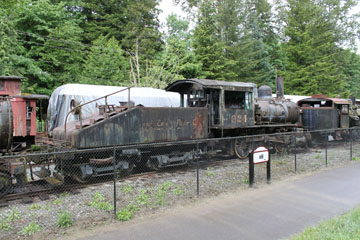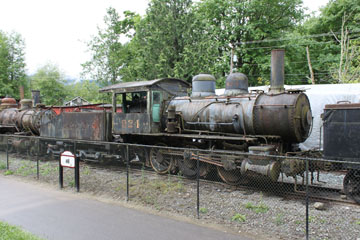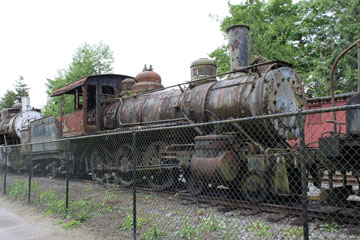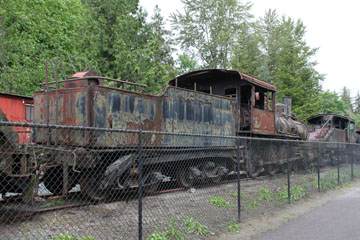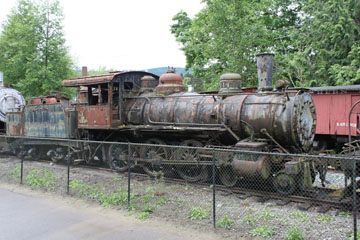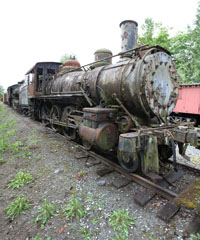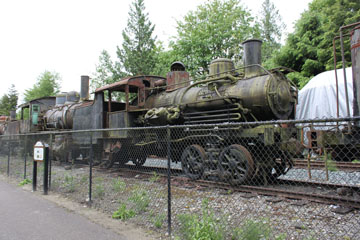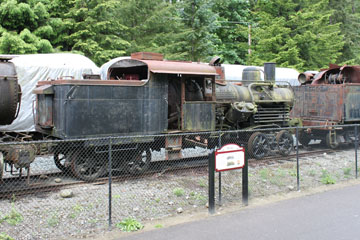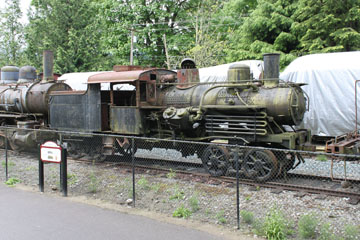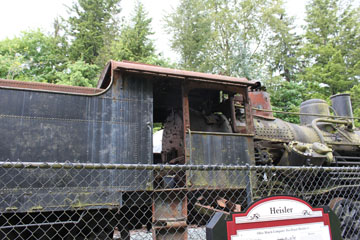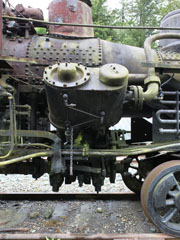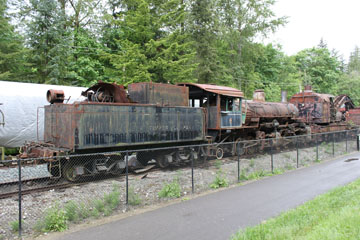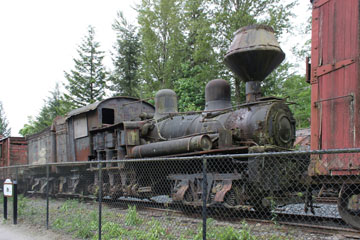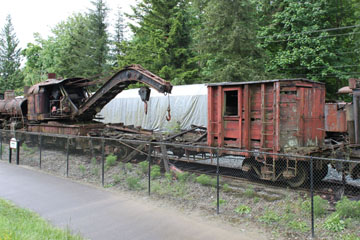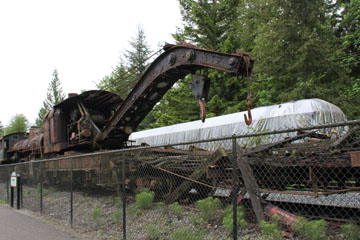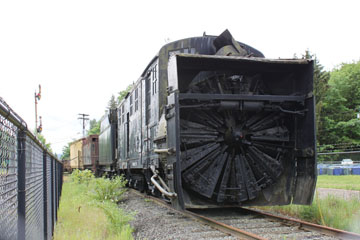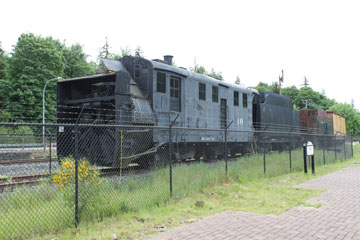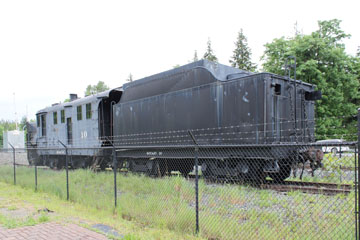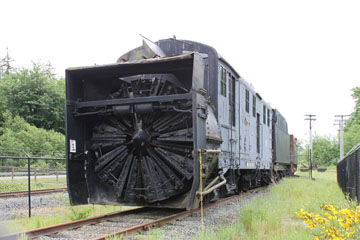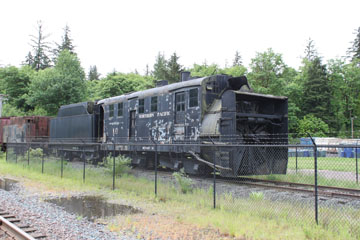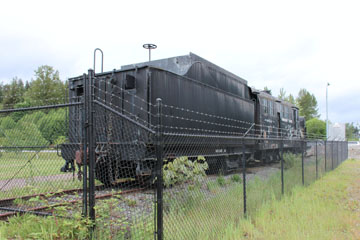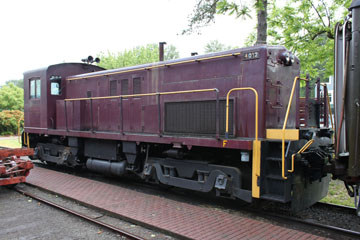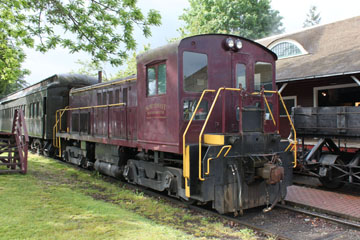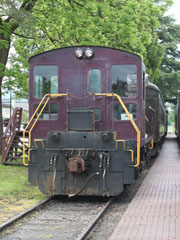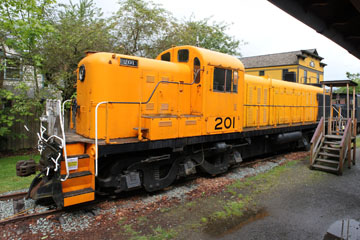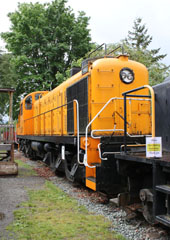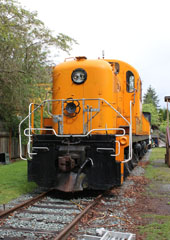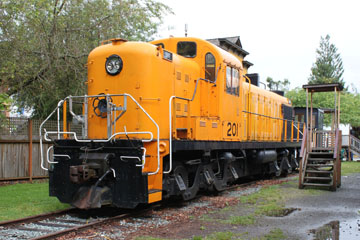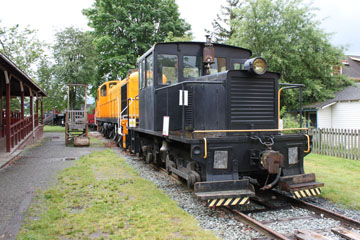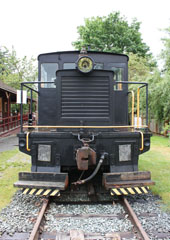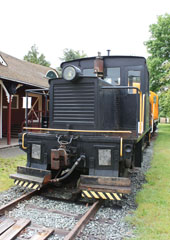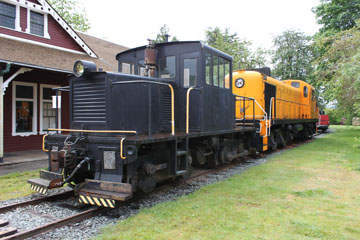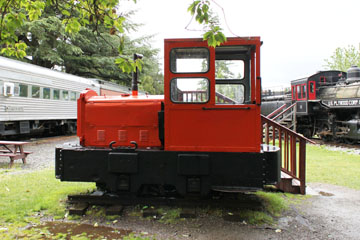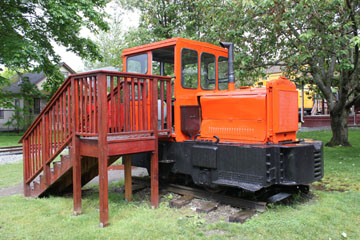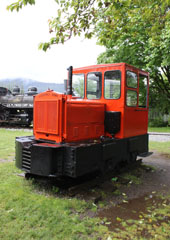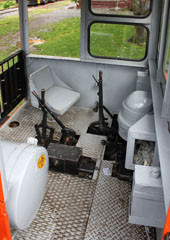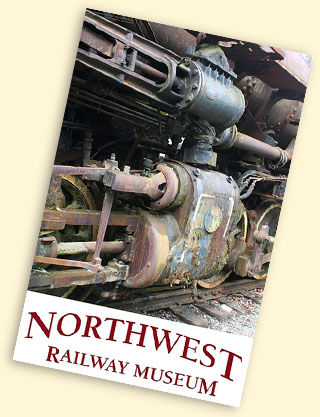

Snoqualmie, 25 miles east of Seattle, WA, just off the I-90 is home to the Northwest Railway Museum. The museum was founded in 1957 as the Puget Sound Railway Historical Association but, in September 1999, changed its name to the Northwest Railway Museum.
The museum really has a remarkable collection of small logging locomotives but, when I have visited, most of it has been outside exposed to the wet western Cascades weather. This has had a very marked effect on the equipment, some of which appears to be literally falling apart. Although a 24,000 sq ft engine house was completed in 2011, none of the locomotives had been moved indoors when I last visited.

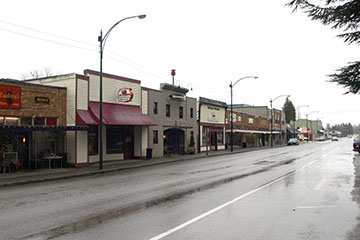
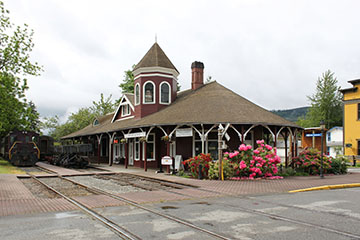
Top view, the museum is on Railroad Ave. SE, part of Snoqualmie’s Historic District.
Lower view, the depot building was constructed
by the Seattle, Lakeshore & Eastern Railway in 1890 and was used by successor companies, the Seattle & International Railroad, Northern Pacific and the Burlington Northern. It was abandoned in 1975. Restored by the museum in 1981, it is now on the National Register of Historic Places. The depot is open 10.00 am - 5.00 pm seven days a week, except Thanksgiving, Christmas Day, and New Year’s Day.

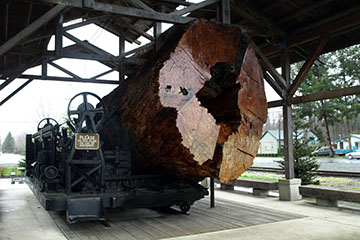
This wheeled logging carriage is on display a couple of hundred yards west of the depot building on Railroad Ave SE. Although not part of the railway museum, it indicates the importance of the lumber industry to the town.
During the 1850s, Anglo-American settlers moved into the area that would become Snoqualmie and began farming, but others soon saw the commercial potential of the huge stands of fir, spruce, hemlock and cedar in the adjacent mountain forests. The first lumber mill was established at the mouth of Tokul Creek around 1872 by Watson Allen. Five years later, there were twelve logging operations on the Snoqualmie River and, within fifteen years, logging and mill work was employing one hundred and forty men and sending millions of board feet of lumber down the river.
The Snoqualmie Falls Lumber Company (later the Weyerhaeuser Timber Company) opened a mill about a mile north of Snoqualmie in 1917, and the wheeled carriage is similar to one used at the mill to push 10-15 foot diameter logs through a massive bandsaw, cutting timbers for a variety of uses, from flooring to timber trestle bridges.

Left and below, when I first visited, US Plywood Corporation #11, a 2-6-6-2 compound articulated Mallet, had been newly painted and was glistening in the rain about three-quarters of a mile north of the depot at the junction of Snoqualmie Parkway and Railroad Ave.
According to Robert A. LeMassena (Articulated Steam Locomotives of North America, Volume II, p.69), it is one of thirty logging Mallets built by Baldwin between 1910 and 1937.
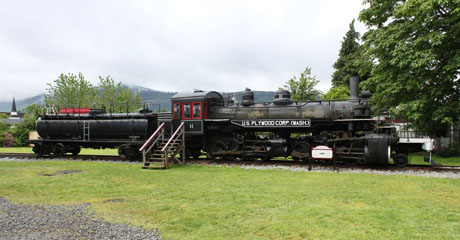
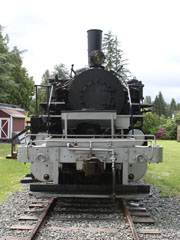
Above, next time I visited, #11 was parked in the museum grounds next to the depot.
The locomotive was built in 1926 as a split saddle tank i.e. with two water tanks, one on either side of the boiler (you can
see a Baldwin saddle tank 2-6-6-2 steaming on the Black Hills Central Railroad page of this website).
Bought by the Ostrander Railway & Timber Co., as #7, it was sold to the Weyerhaeuser Timber Company in 1939. Renumbered #5, it operated in and around Klamath Falls, OR. The side tanks were removed in 1940 and a tender added.

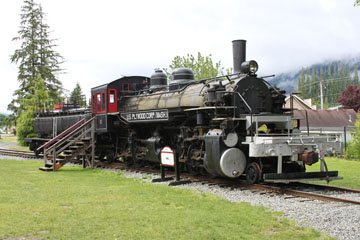
#5 was sold to the Kosmos Timber Company in Kosmos, WA, in 1950 and renumbered #11. In 1952, Kosmos changed its name to the United States Plywood Corporation. #11 was retired in 1960 and donated to the University of Washington where it was placed on display at the university’s Seattle, WA, campus in 1961.
In 1974, #11 passed to Washington State Parks, who leased it to the museum. Restored to operating condition, the locomotive hauled the Snoqualmie Valley Train from North Bend to Snoqualmie Falls for a number of years.

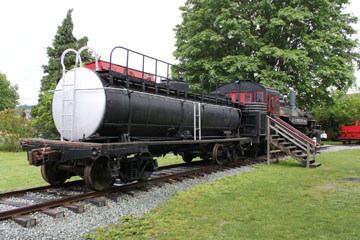
#11 last hauled the Snoqualmie Valley Train in
1990. Work began in 2002 to restore it to its appearance when operating at the United States Plywood Corporation, and it went on display at Snoqualmie Pky and Railroad Ave in 2005. Plans have since been mooted to restore the locomotive to operation, but these have so far come to nothing, although it is obviously quite well looked after.
#11 is very similar in design to Weyerhaeuser Timber #6, also owned by the museum and shown later on this page, but in much better condition.
#11 is an oil burner. The engine weighs 245,000 lbs, 213,000 lbs on both sets of 44” drivers. With a 32 sq ft grate, 18” x 24” rear, high pressure cylinders and 28” x 24” front, low pressures cylinders, it operated at a boiler pressure of 200 psi, delivering 42,500 lbs tractive effort. The tender has a capacity of 1,200 gallons of oil and 3,200 gallons of water.
You can see other Baldwin logging Mallets on the Black Hills Central Railroad page of this website, the Southwest Lumber #12 page and the Pacific Southwest Railway Museum page.

This Consolidation (2-8-0) was built as #969, one of fifteen (#965-#979) delivered to the Union Pacific subsidiary the Oregon Short Line in 1903 by Burnham, Williams & Co, one of the early incarnations of the Baldwin Locomotive Works.
Built as a Vauclain compound, #969 had
16”x 30” high pressure and 27” x 30” low pressure cylinders. Weighing 196,400 lbs, 175,600 lbs on its 57”drivers, with a 33.8 sq ft grate, 202.4 sq ft firebox and 2,570 sq ft heating surface, it operated at a boiler pressure of 200 psi delivering 34,510 lbs tractive effort.
In 1915, #969 was renumbered #529 but, by this time, many US railroads were no longer buying compounds and converting those they owned to simple expansion.
In 1918, the fifteen OSL Vauclain compounds were simpled with
21½” x 30” cylinders.
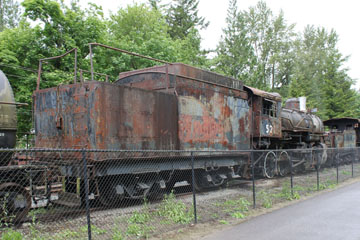
The main argument for compounding was greater fuel economy and less use of water, but these gains were generally wiped out by added maintenance costs. Although thousands of Vauclains were built for both US and overseas buyers, mainly by Baldwin, only three have survived in the US, all of which worked on the Manitou & Pikes Peak Railway. You can see one of these on the Manitou& Pikes Peak #2 page of this website and #1 on the Colorado Railroad Museum page.
When #529 was simpled, the original Stephenson valve gear was replaced by Walschaert. At some stage, it was also superheated, the rebuild increasing the weight to 197,300 lbs, although slightly reduced to 174,000 lbs on the drivers. The grate increased to 49.5 sq ft and the firebox reduced to 174 sq ft. The operating boiler pressure was also reduced to 190 psi but, with a total heating surface of 2,810, including 464 sq ft superheating, they nevertheless delivered 39,291 lbs tractive effort, a 12% increase.
You can see more UP C-57 Consolidations on the UP #407, UP #437, UP #480, UP #481 and UP #485 pages of this website.

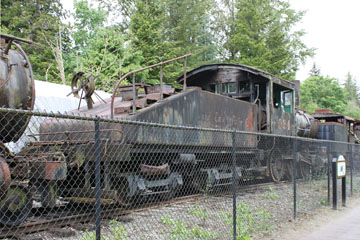
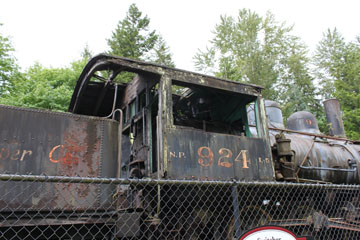
An 0-6-0 switcher bought in 1899 by the St. Paul & Duluth Railway from Rogers Locomotive Works, later part of Alco, as #74, this engine was renumbered #924 when the Northern Pacific took over the SP&D in 1900. It spent most of its working life in Seattle and Tacoma, WA. Sold to the Inland Empire Paper Co., in 1925, it worked in Millwood, WA, until retired in 1969.
#924 weighs 115,000 lbs. A coal burner, it has
19” x 24” cylinders and 51” drivers. Operating at a boiler pressure of 180 psi, it delivered 26,000 lbs tractive effort.


Built in 1898 by Baldwin, this Ten Wheeler (4-6-0) #14 spent its entire life working on Vancouver Island, BC.
It weighs 127,100 lbs, 96,100 lbs on its 56” drivers, and has 19” x 24” cylinders.
A coal burner operating at a boiler pressure of 180 psi, #14 delivered 23,671 lbs tractive effort.
It spent over sixty years hauling coal from mines on the island to a giant coal dock at the deepwater port of Union Bay on the east coast. In 1910, Canadian Collieries bought out the Union Collieries of British Columbia, owner of the mines, along with the railroad that served them, including #14 and another locomotive, #17. In 1960, both locomotives were sold to the Puget Sound Railway Historical Association, which later became the Northwest Railway Museum.

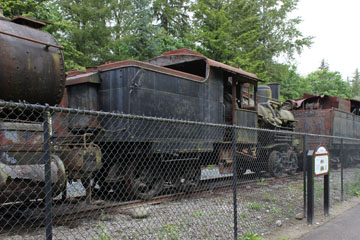
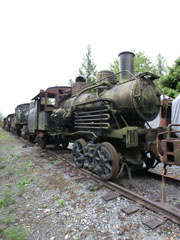
This two truck geared locomotive was built by the Heisler Locomotive Works in Erie, PA, in 1923 as #4 for the Ohio Match Company.
The twenty-five mile line between Garwood and the Burnt Cabin drainage in Idaho was known as the Burnt Cabin Creek Railroad.
An oil burner weighing 100,000 lbs with 15” x 12” cylinders, #4 operated at a boiler pressure of 180 psi delivering 20,000 lbs tractive effort. In 1933, it was sold to the National Pole & Treating Co. Renumbered #2, it worked at a treatment plant near Spokane, WA. It was sold to Charles Morrow in Snoqualmie in 1958 and then to the Puget Sound Railway Historical Association in 1967.
You can see other Heislers on the Travel Town page of this website, the Durbin Rocket page, the Railroad Museum of Pennsylvania Train Shed and the Southeastern Railway Museum pages.

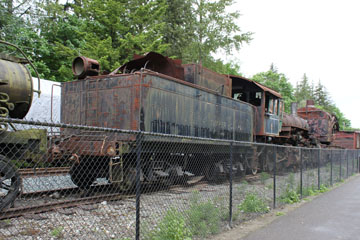
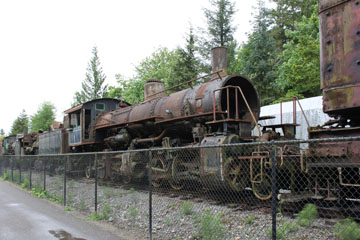
This Baldwin 2-6-6-2 logging Mallet was built as #8 in 1928 for the Mud Bay Logging Co., in Olympia, WA. Transferred from Mud Bay Logging to Weyerhaeuser’s Klamath Falls, OR, branch in 1940, it was renumbered #6 and then sold to the Puget Sound Railway Historical Association in 1965. It was sold in 2016 to the Black Hills Central Railroad in South Dakota.
#6 weighs 210,000 lbs. With 18” x 24” high pressure, 28” x 24” low pressure cylinders and 14” drivers, it operated at a boiler pressure of 200 psi delivering 42,500 lbs tractive effort.
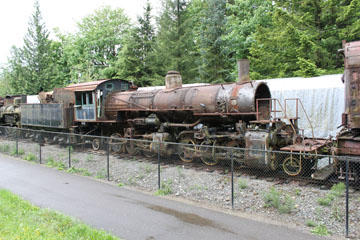
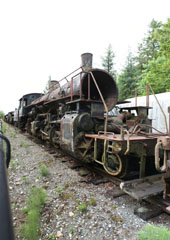
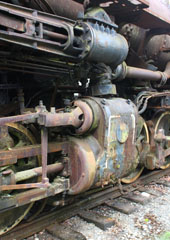

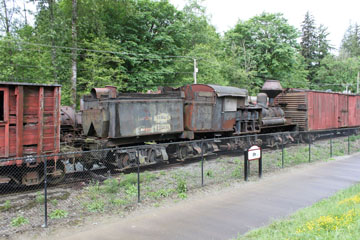
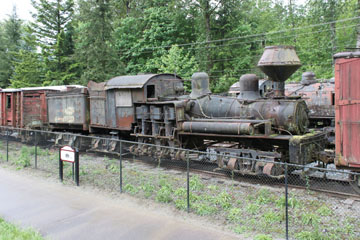
The Newhouse Mines & Smelter Co., bought this three truck Shay locomotive shortly after the company was incorporated in 1903. It hauled copper ore from the Cactus Mine on the company’s Newhouse, Copper Gulch and Revier Railroad in Utah.
The copper mines were played out by 1913 and #1 was sold to Cramer Kay Machinery Co., a dealer based in Salt Lake City, UT. It was bought by the Eastern Railway & Lumber Co., two years later
and shipped to Centralia, WA, to haul logging trains.
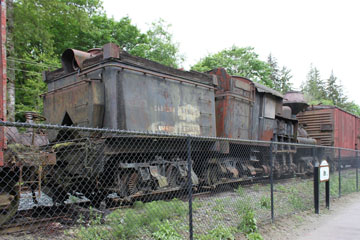
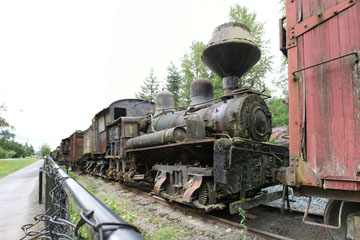

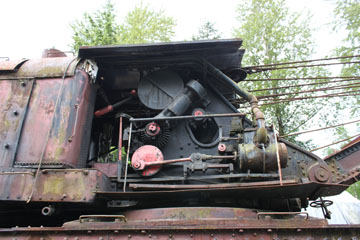
Industrial Works built this steam wrecker for the Spokane Portland & Seattle Railway in 1908. X-5 was based in Vancouver, WA, and was sold to the Purdy Co., in Chehalis, WA, in 1972. The Puget Sound Railway Historical Association then bought it the same year.
Industrial Works was founded in 1873, primarily repairing equipment and supplying saws, engines and boilers for the many local sawmills and shipbuilders around Bay City, MI. The firm built its first crane for the Chicago & Western Illinois Railroad in 1883. In 1931, it combined with the Brown Hoisting Company of Cleveland, OH, (established in 1880) to form Industrial Brownhoist. After over one hundred years of production marked by a number of changes of ownership, the plant finally shut in 1983.
There are lots more Industrial Brownhoist cranes on this website. You can see them on the Baltimore & Ohio Railroad Museum Yard and Car Shop, Nevada Northern Railroad Museum, the Ogden Union Station, Gold Coast Railroad Museum, Pennsylvania Railroad Museum Yard, Monticello Railway Museum and Virginia Museum of Transportation pages.

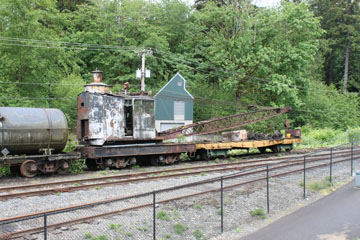
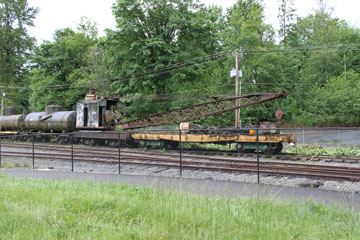
This 25 ton steam crane was built by the Ohio Locomotive Crane Co., in Bucyrus, OH, in 1929. Sold to the Seaboard Lumber Co., in Seattle, WA, in 1931, it moved to the museum in 1973.
The Ohio Locomotive Crane Co., was founded in 1909 by Charles F. Michael. Initially located on North Sandusky Ave in Bucyrus, its first crane was a small, coal burning four wheeler, with a frame cab and stubby boom. In 1915 the plant was relocated to Southern Ave, where it is still in operation today as part of the American & Ohio Locomotive Crane Co.

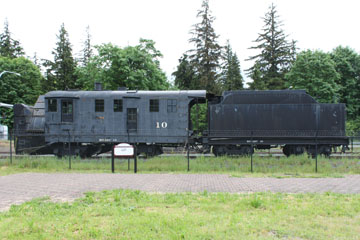
Built by the Cooke Locomotive Works in Paterson, NJ, (later part of Alco) in 1907, #10 is one of the very few Northern Pacific Railway rotary snowplows to have been preserved. When I last visited, it had taken the place of US Plywood Corp., #11 at the junction of Snoqualmie Pkwy and Railroad Ave.
#10 has a fire tube boiler that powers two sets of steam cylinders to drive the 9’ 8½” rotary blade. There is also a flanger blade underneath the plow to clear snow from between the tracks. It can be raised and lowered to pass over points. The plow is not self propelled but has to be pushed by other locomotives. The number used depends on the depth of the snow.
Built as a coal burner, the plow was converted to burn oil in 1947, and the original wood body was replaced by a steel body some time later. The steel rotary blades were never changed. It spent most of its working life clearing snow on Northern Pacific’s Stampede Pass in the Cascade Mountains. Summers were spent cold (i.e. without being fired) in Auburn, WA. In winter, it would move to Lester up near the pass. #10 was donated to the museum by the Northern Pacific in 1968.

You can see another historic Northern Pacific rotary snowplow, #2, on the Lake Superior Railroad Museum page of this website. Built in 1887, it is the oldest surviving rotary snowplow in the US.
You can also see photos of more rotary snowplows on the Colorado Railroad Museum page, Cumbres & Toltec Scenic Railroad page, Steamtown page, Nevada Northern
Railway Museum page, Illinois Railway Museum Yard page, National Museum of Transportation, St. Louis Yard page, Forney Transportation Museum page and Cheyenne Roundhouse page.

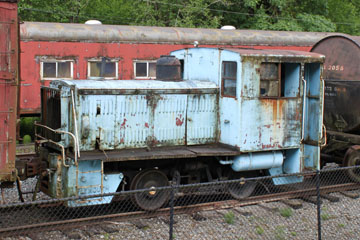
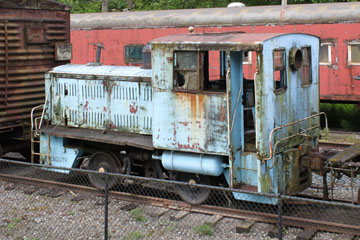
Plymouth Locomotive Works in Plymouth, OH, built this diesel powered MLW-8 35 ton switcher in 1943 for the US Army as #7587. It was later bought by Western Steel Casting in Seattle, WA, who donated it to the museum in 1985.
Over seven and a half thousand locomotives were built in Plymouth starting in 1910 under the J. D. Fate Co., then in 1919 as Fate-Root-Heath and, finally, Plymouth Locomotive Works in the late 1950s. Generally under 25 ton gasoline burners designed for industrial use, the last engine came off the factory line in 1999.

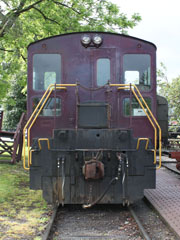
Road Switcher (“RS”), 4th military type (“4”), Army Transportation Corps (“TC”) #4012 is one of sixty-six built for the US Army from 1953 to 1955 (#1247-#1273& #4001-#4039).
The 1200 series were built for domestic use, the 4000s for foreign service.
The RS-4-TC is equipped with a Caterpillar D397 V12 400 hp prime mover although many were later re-powered with Caterpillar D-3508 500 hp engines and EMD control stands. Weighing 60,000 lbs and 39’ 2” long, it has a Westinghouse WH1604C generator and four Westinghouse 4WH974A traction motors, one on each axle of the General Steel Castings trucks.
You can see two
other ex-USA RS-4-TC units, #4010 & #4044,
on the Kentucky Railway Museum page of this website, as well as one of the 1200 series,
#1256, on the Mid-Continent Railway Museum page.

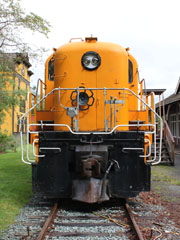
This Alco RSD-4 is a 1,600 hp three axle road switcher built for the Kennecott Copper Co., in 1951. Similar to Alco’s RS-3, the RS-4’s six traction motors gave better tractive effort at lower speeds but the inadequate capacity of the main generator meant the RSD-4 was soon superseded by the RSD-5. Only thirty-six were built from 1951 to 1952, and KCCX #201 is the sole survivor.
With an Alco 4-cycle Model 244 V12 driving a GE GT581 generator to power the six GE 752 traction motors, it developed 78,750 lbs continuous tractive effort at 12 mph with a top speed of 65 mph.

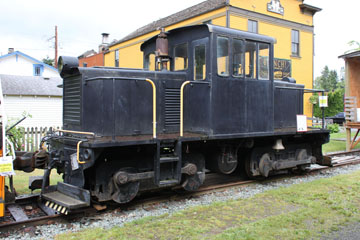
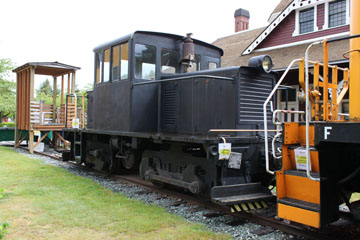
The Elwood Ordnance Plant in Wilmington, IL, took delivery of this 45 ton switcher from GE in 1941. #7320 was later transferred to the US Army Transportation Corps and probably worked at facilities in California. It then moved to the US Navy Puget Sound Naval Shipyard and was later donated to the museum.
#7320 has two Cummins HBI-600 six cylinder engines, each developing 150 hp and powering a separate generator which, in turn, drove a single traction motor on each truck. Power was transmitted to the second axle by side rods.

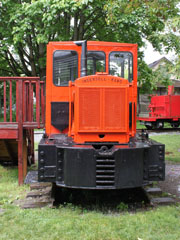
With a Waukesha 145GK six cylinder engine, 6-C was built by the Whitcomb Locomotive Works in Rochelle, IL, in 1925 as a 36” gauge switcher. It worked on a dam construction site in Magma, AZ, and was
then bought by the Southern Pacific, converted to standard gauge and employed at a tie treating plant in Oakland, CA.
It was later sold to J. H. Baxter Co., and used in the company’s wood treating plant in
Alameda, CA, until transferred to the Renton, WA, plant in 1960. After the plant closed in 1981, the engine was bought by the museum.





